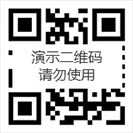Self-recording rain gauges are instruments that automatically record rainfall and its course.Two types are commonly used, the siphon type and the tipping bucket type.Rain gauge is used to collect precipitation special apparatus, and through the matching rain gauge cylinder, used to determine the amount of precipitation in millimeters.Applicable to meteorological stations (stations), hydrological stations, environmental protection, flood control and drainage, as well as agriculture, forestry and other relevant departments used to measure precipitation.
Define
Self-recording rain gauges are instruments that automatically record rainfall and its course.
Typology
Self-recording instruments for direct observation of precipitation processes.There are many types.According to the sensing method, there are siphon type, tipping bucket type, weighing type and so on.According to the recording period, there are diary, weekly and January, a quarter to a year.In terms of recording methods, there are analog images, digital displays, perforated paper tapes, solid-state circuit storage and other forms.The latter two can be processed by computer.In terms of observation and transmission methods, wired telemetry and wireless telemetry rain gauges have been developed.
Siphon
The siphon type is a diary type, which can automatically record the rainfall amount, rainfall intensity change and the starting and ending time.It consists of rain bearer, siphon tube, self-recording system, etc. When the rainfall reaches 10mm, it will automatically siphon once.
Tipping bucket
The tipping bucket type can automatically record the rainfall and its changes over time.Mainly by the sensor and the recorder, the sensor has two triangular tipping bucket alternately flip, when the rainfall reaches 0.1mm, the tipping bucket flip once, the sensor sends out a pulse signal, and drive the self-marking pen to record automatically.
Weighing
This instrument continuously records the weight of precipitation on and stored in the rain catchment cup.The recording method can be by means of a mechanical clockwork device or a balanced hammer system, which records the weight of all precipitation as it falls, and is capable of recording snow, hail, and mixed rain and snow precipitation.
Specification sheet
rain gauge
| Area of the spout | 314cm2 |
| Inner diameter of the spout | φ200+0.60mm |
| Scale range of the rain gauge | 0.05mm~10mm |
| Minimum graduation of the rain gauge | 0.1mm |
| Capacity of the reservoir | 2000mL~2500mL |
| Normal working environment | -50℃~45℃ |
| Overall dimensions | φ210mm×792mm |
| Weight | 3kg |
1, the water bearer and the cylinder should be ensured to be easy to install, and can ensure that the water bearer will not be disengaged due to the influence of wind in normal use.
2, all contact with the water should be smooth, its mutual cooperation or connection part of the weld should be tight, firm, no water leakage phenomenon.
3, rain gauge parts, components of the assembly should be correct, there shall be no loose, deformation and other defects affecting the use.
4, rain gauge parts, components of the protective layer should be firm, uniform, smooth, no delamination, rust and other defects.
5, rain gauge and installation framework should ensure easy installation, and can ensure that the rain gauge in normal use will not be disengaged due to the impact of wind.
6、Accessories: a small funnel, a rain gauge cup, a water reservoir, a mounting frame.

